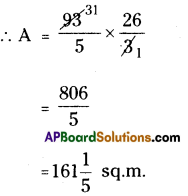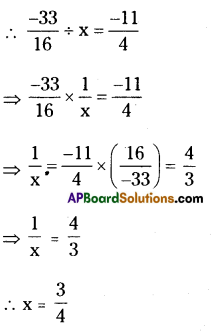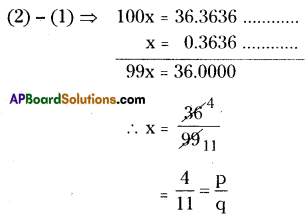1.Rational Numbers
Click here to get the app
Click here to get the app
Rational Numbers
A number is called Rational if it can be expressed in the form p/q where p and q are integers (q > 0). It includes all natural, whole number and integers.
Example: 1/2, 4/3, 5/7,1 etc.
Natural Numbers
All the positive integers from 1, 2, 3,……, ∞.
Whole Numbers
All the natural numbers including zero are called Whole Numbers.
Integers
All negative and positive numbers including zero are called Integers.
Properties of Rational Numbers
1. Closure Property
This shows that the operation of any two same types of numbers is also the same type or not.
a. Whole Numbers
If p and q are two whole numbers then
b. Integers If p and q are two integers then
c. Rational Numbers
If p and q are two rational numbers then
2. Commutative Property
This shows that the position of numbers does not matter i.e. if you swap the positions of the numbers then also the result will be the same.
a. Whole Numbers
If p and q are two whole numbers then
3. Associative Property
This shows that the grouping of numbers does not matter i.e. we can use operations on any two numbers first and the result will be the same.
a. Whole Numbers
If p, q and r are three whole numbers then
b. Integers
If p, q and r are three integers then
c. Rational Numbers
If p, q and r are three rational numbers then
The Role of Zero in Numbers (Additive Identity)
Zero is the additive identity for whole numbers, integers and rational numbers.
Rational Numbers between Two Rational Numbers
Method 1
Example
Find the rational number between 1/10 and 2/10.
Solution
As we can see that there are no visible rational numbers between these two numbers. So we need to write the equivalent fraction.
2/10 = 20/100((multiply the numerator and denominator by 10)
Hence, 2/100, 3/100, 4/100……19/100 are all the rational numbers between 1/10 and 2/10.
Method 2
Find the rational number between 1/10 and 2/10.
Solution
To find mean we have to divide the sum of two rational numbers by 2.
3/20 is the required rational numbers and we can find more by continuing the same process with the old and the new rational number.
Complete Chapter Notes And (Live) Classes Click below
Question 1.
Name the properly Involved in the following examples.
vii) 7a + (-7) = 0
viii) x +
ix) (2 x x) + (2 x 6) = 2 x (x + 6)
Solution:
i) Additive identity
ii) Distributive law
iii) Multiplicative identity
iv) Multiplicative identity
v) Commutative law of addition
vi) Closure law in multiplication
vii) Additive inverse
viii) Multiplicative inverse
ix) Distributiv
Question 2.
Write the additive and the multiplicative inverses of the following.
i)
ii) 1
iii) 0
iv)
v) -1
Solution:
Question 3.
Fill in the blanks
Solution
Question 4.
Question 5.
Which properties can be used computing
Solution:
The following properties are involved in the product of
i) Multiplicative associative property.
ii) Multiplicative inverse.
iii) Multiplicative identity.
iv) Closure with addition
Question 6.
Verify the following
Solution:
Question 7.
Evaluate
Solution:
Question 8.
Subtract
(i)
(ii)
(iii) -7 from
Solution:
Question 9.
What numbers should be added to
Solution:
Let the number to be add ‘x’ say
∴
Question 10.
The sum of two rational numbers is 8 If one of the numbers is
Let the second number be ‘x’ say
⇒
⇒
∴ The other number (x) =
Question 11.
Is subtraction associative in rational numbers? Explain with an example.
Solution:
Let
Associative property under subtraction
a – (b – c) = (a – b) – c
∴ L.H.S. ≠ R.H.S.
∴ a – (b – c) ≠ (a – b) – c
∴ Subtraction is not an associative in rational numbers.
Question 12.
Verify that – (-x) = x for
(i) x =
(ii) x =
Solution:
Question 13.
Write-
(i) The set of numbers which do not have any additive identity
(ii) The rational number that does not have any reciprocal
(iii) The reciprocal of a negative rational number.
Solution:
i) Set of natural numbers ’N’ doesn’t possesses the number ‘0’.
ii) The rational number ‘0’ has no multiplicative inverse.
[ ∵ 1/0 is not defined]
iii) The reciprocal of a negative rational number is a negative rational number.
Ex : Reciprocal of
Exercise 1.2
Question 1.
Represent these numbers on the number line.
(i)
(ii)
Solution:
(i) 
(ii)
Question 2.
Represent
Solution:
Question 3.
Write five rational numbers which are smaller than
Solution:
The rational number which are less than
Question 4.
Find 12 rational numbers between -1 and 2.
Solution:
Question 5.Find a rational number between
[Hint : First write the rational hu numbers with equal denominators.]
Solution:
The given rational numbers are
The rational numbers between
(∵ the rational number between a, b is
∴ the rational number between
Question 6.
Find ten rational numbers between
Solution:
The 10 rational numbers between 
∴ We can select any 10 rational numbers from the above number line.
Exercise 1.3
Question 1.
Express each of the following decimal in the
(i) 0.57 (ii) 0.176 (iii) 1.00001 (iv) 25.125
Solution:
Question 2.
Express each of the following decimals in the rational form
(1)
(ii)
(iii)
(iv)
Solution:
(i) Let x = 0.999 ………………. (1)
Here periodicity is 1. So, equation (1) should be multiplied both sides with
= 10 × x = 10 × 0.999
10 x = 9.999 ………….. (2)
(ii) x =
Here periodicity is 2. So, we should multiply with 100
⇒ 100 × x = 100 x 0.5757 …………..
100 × =57.57 ……………………. (2)
(iii)
x =
x =
Here periodicity is 2. So, equation (1) should multiply with 100
⇒ 100 × x = 100 × 0.72929 …………..
100 × = 72.929 …………………… (2)
Iv)
⇒ x = 12.288 ………..(1)
Here periodicity is 1. So, equation (1) should multiply with 10
10 x = 122.888 …………………… (2)
Question 3.
Find(x + y) ÷ (x – y) if
(i) x =
(ii) x =
Solution:If x =
ABCD
ii) x =
Question 4.
Divide the sum of
Solution:
Sum of
the product of
Question 5.
If
Solution:
Let the number be ‘x’ say.
Question 6.
Two pieces of lengths 2
Soltuion:
The length of the remaining rope Is x
∴ The length of remaining rope
= 5
Question 7.
The cost of 7
Solution:
The cost of 7
= ₹
∴ The cost of 1m cloth
=
Question 8.
Find the area of a rectangular park which is 18
Solution:
The length of the rectangular park
= 18
Its width / breath = 8
∴ Area of the rectangular park
(A) = l × b
Question 9.
What number should
Solution:
Let the dividing number be ‘x’ say.
Question 10.
If 36 trousers of equal sizes can be stitched with 64 meters of cloth. What is the length of the cloth required for each trouser?
Solution:
36 trousers of equal sizes can he stitched with 64 mts of cloth, then the length of the cloth ¡s required for each trouser
= 64 ÷ 36
=
Question 11.
When the repeating decimal 0.363636 …. is written in simplest fractional form
Solution:
x = 0.363636………………………….. (1)
Here periodicity is ‘2’. So, equation (1) should be multiplied both sides with 100.
⇒ 100 × x = 100 × 0.363636 …………..
100 x = 36.3636 ………..(2)
























